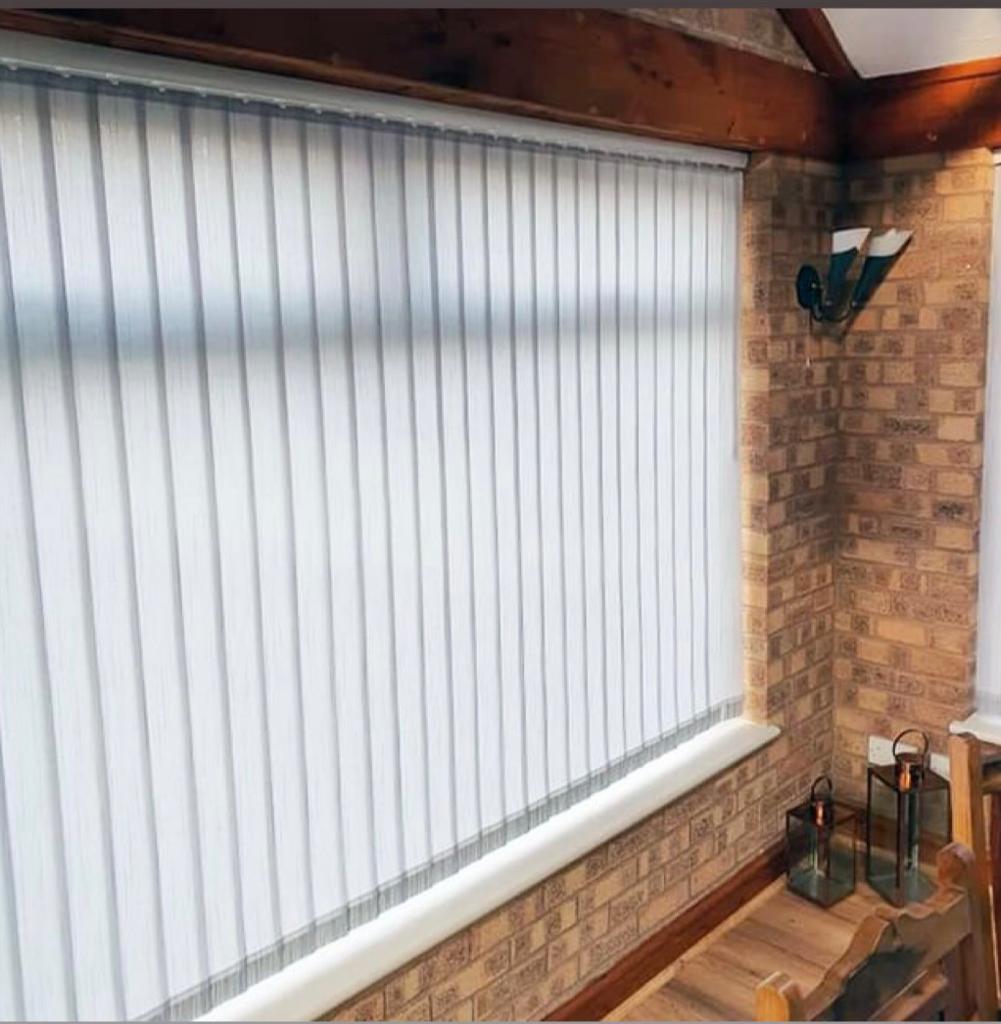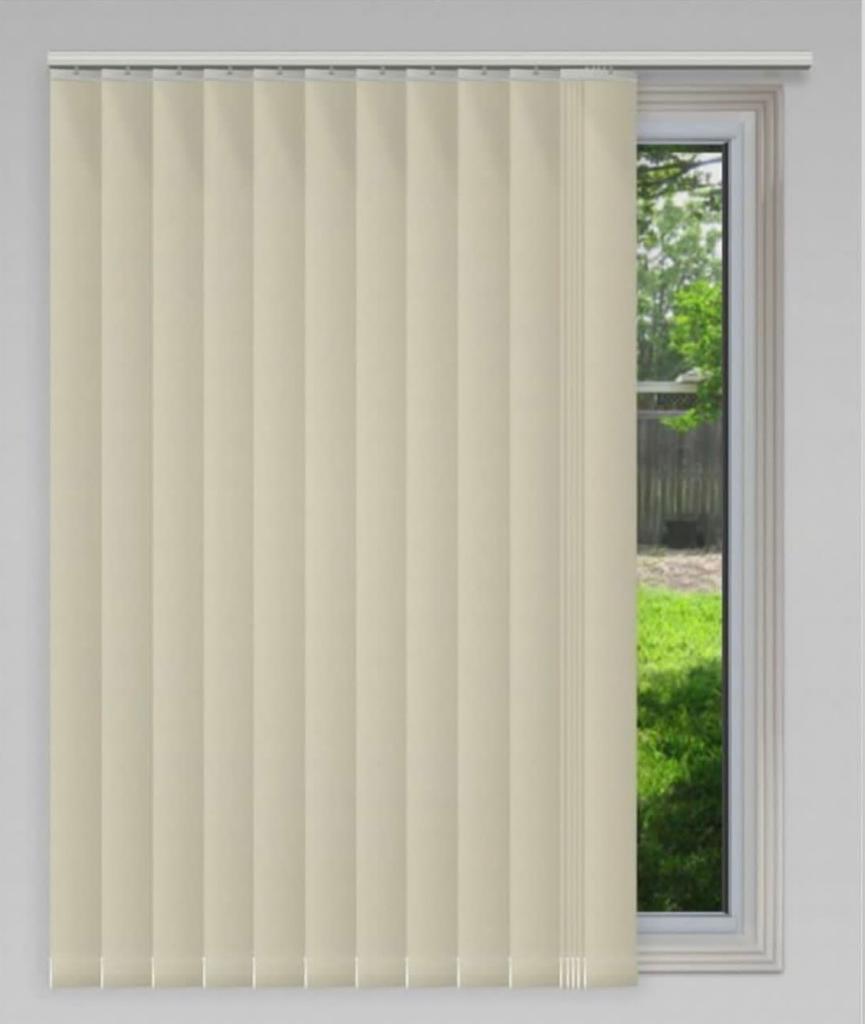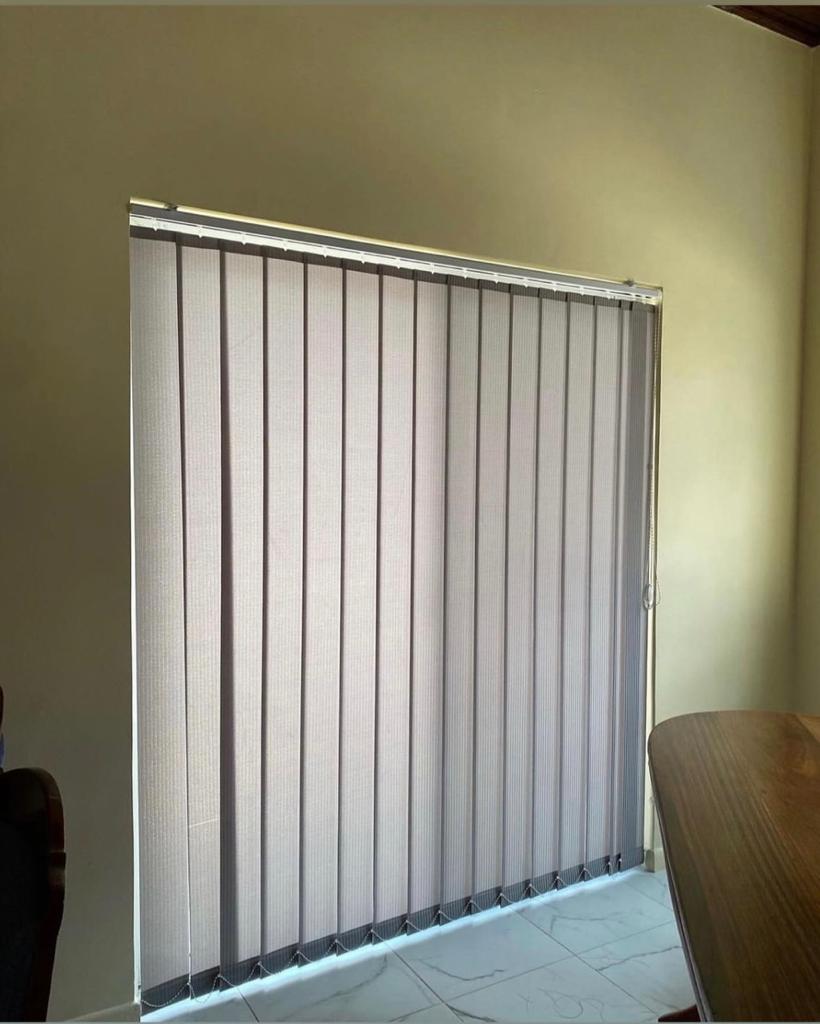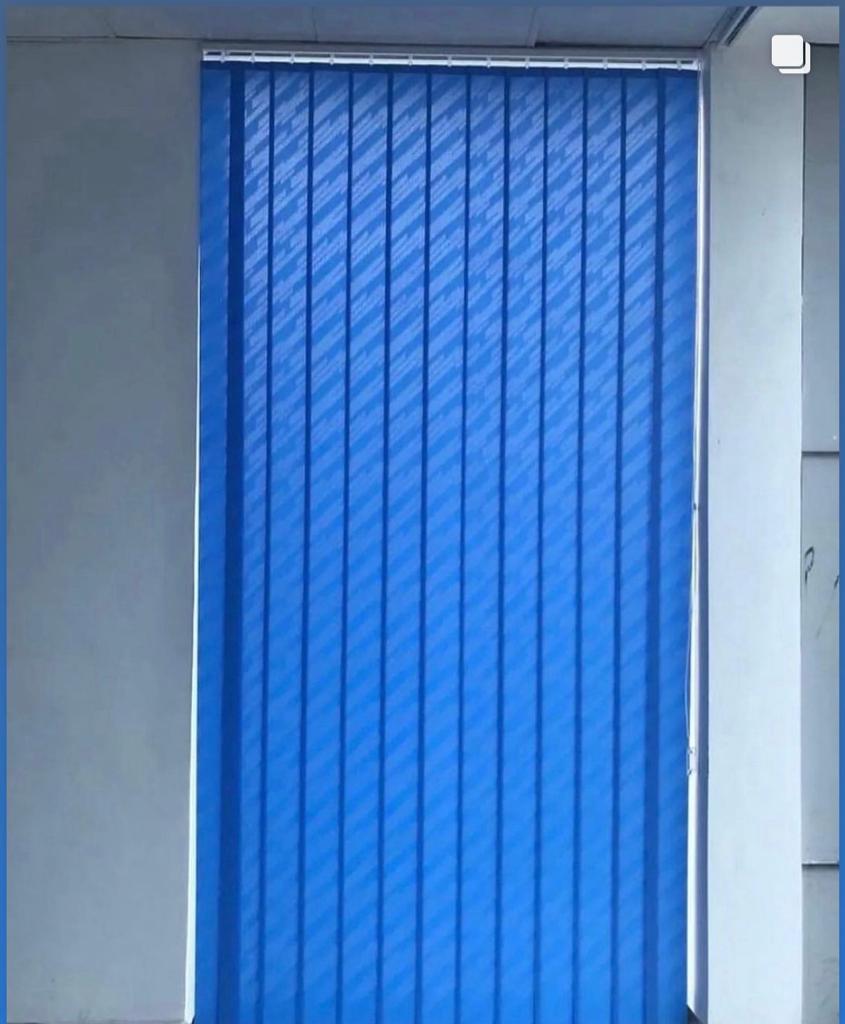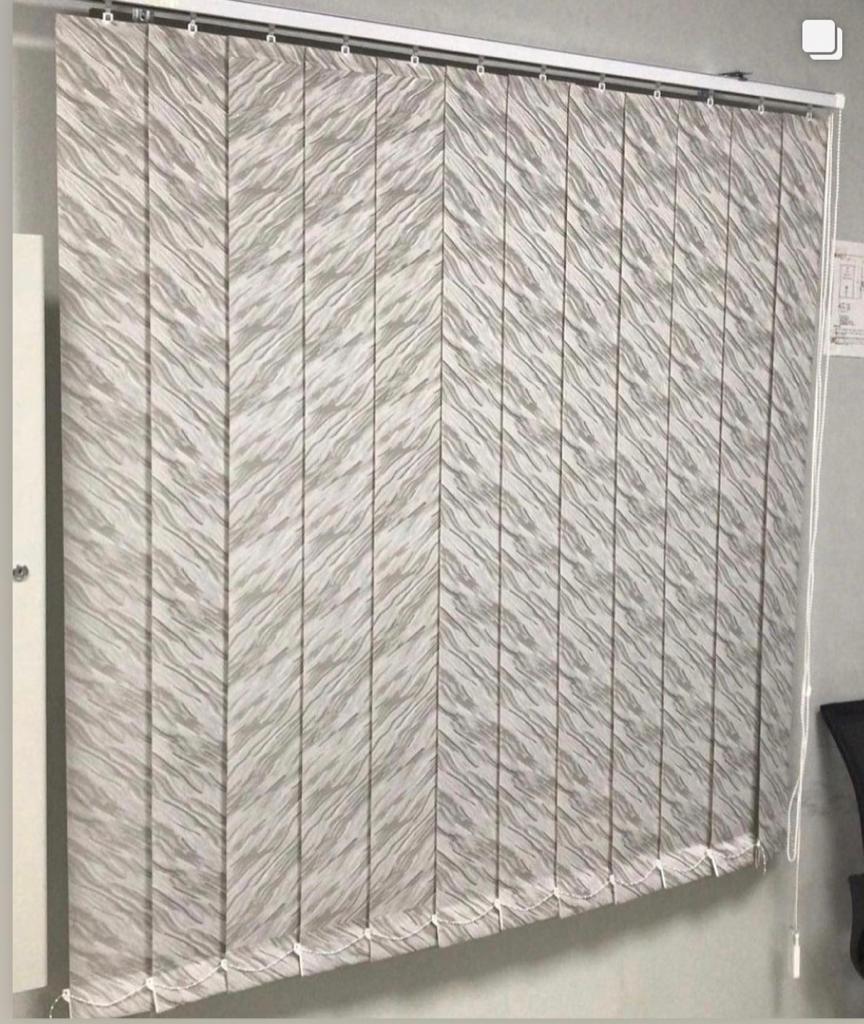VERTICAL BLINDS
Here is our best option!
VERTICAL BLINDS
Discover everything you need to know about vertical blinds in this comprehensive guide. From their types and materials to installation and maintenance, we cover it all. Whether you’re looking to enhance the look of your windows or control the amount of light and privacy in your room, vertical blinds are a practical and elegant solution.
Windows are an essential part of any room, bringing in natural light and providing a view of the outside world. However, they can also present a challenge when it comes to privacy and light control. That’s where window treatments come in, and vertical blinds are an excellent option for those looking to strike a balance between style and function. In this comprehensive guide, we’ll explore everything you need to know about vertical blinds, including their types, materials, installation process, and maintenance. Whether you’re looking to update your home or office, vertical blinds offer a practical and elegant solution.
What are Vertical Blinds?
Vertical blinds are a type of window treatment that consists of vertical slats or louvers that hang from a track at the top of the window frame. These slats can be made of various materials such as fabric, vinyl, aluminum, or wood, and can be adjusted to control the amount of light and privacy in the room. By tilting the slats, you can direct the light where you want it while still maintaining privacy. And by drawing the blinds to the side, you can fully expose the window for an unobstructed view. Vertical blinds are a popular choice for both residential and commercial settings due to their versatility, ease of use, and aesthetic appeal.
How Vertical Blinds Work?
Vertical blinds work by using a track system that allows the slats to be adjusted or moved aside. The track is mounted at the top of the window frame, and the slats hang vertically from the track. The slats can be made of various materials and can vary in size and thickness.
To adjust the amount of light and privacy in the room, you can use a cord or wand to tilt the slats. Tilting the slats at an angle will allow light to filter through while still maintaining privacy. If you want to let in more light or have an unobstructed view, you can draw the blinds to the side.
Vertical blinds can also be partially or fully drawn to the side to allow more light into the room or for cleaning purposes. The slats can be easily removed from the track for cleaning or replacement.
Overall, vertical blinds are a versatile and practical window treatment that allows you to control the amount of light and privacy in a room while also adding an element of style to your windows.
Features of Vertical Blinds
Vertical blinds offer several features that make them a popular choice for window treatments:
- Light Control: Vertical blinds offer excellent light control, allowing you to adjust the slats to let in just the right amount of light. This makes them ideal for rooms where you want to keep out harsh sunlight, such as bedrooms or home theaters.
- Privacy: The ability to tilt the slats also provides privacy by preventing people from seeing into your home or office.
- Versatility: Vertical blinds are incredibly versatile and can be used in a variety of spaces, from formal living rooms to casual family rooms. They come in a range of materials and colors, so you can choose the perfect option to match your decor.
- Easy Maintenance: Vertical blinds are easy to clean and maintain. They can be wiped down with a damp cloth, and the slats can be easily removed for cleaning or replacement.
- Durability: Vertical blinds are made of durable materials and can withstand daily use, making them a long-lasting investment.
- Energy Efficiency: Vertical blinds can also help with energy efficiency by blocking out the sun’s heat during the summer and keeping the heat in during the winter.
- Easy to Clean: Unlike some other window treatments, vertical blinds are easy to clean and maintain. Simply wipe them down with a damp cloth or vacuum them to remove dust and debris.
Types of Vertical Blinds
Vertical blinds come in various types, each with its unique features and benefits. Here are some of the most common types of vertical blinds:
Fabric Vertical Blinds:
Fabric vertical blinds are a versatile and stylish option for those looking to add a touch of elegance to their windows and doors. They offer a soft and luxurious look while providing privacy and light control.
The adaptability of cloth vertical blinds is one of their key advantages.They are available in a wide range of colors, patterns, and textures, allowing you to choose a style that complements your decor and personal preferences.
Fabric vertical blinds are also an excellent choice for those looking to create a cozy and inviting atmosphere in their home or office. They offer a soft and gentle look that can help to soften the hard lines of a room and create a warm and inviting space.
Vinyl Vertical Blinds:
Vinyl vertical blinds are a popular and affordable option for many homeowners and businesses. They offer a sleek and modern look while providing privacy and light control for your windows and doors.
One of the main benefits of vinyl vertical blinds is their durability. They are made of a sturdy, PVC material that is resistant to moisture, stains, and fading. This makes them an excellent choice for high-traffic areas or rooms with high humidity levels, such as bathrooms or kitchens.
Another advantage of vinyl vertical blinds is their ease of maintenance. They are easy to clean with a damp cloth or a quick wipe-down with a mild detergent and water. Plus, their smooth surface prevents dust and debris from accumulating, making them a great choice for those with allergies or respiratory issues.
Aluminum Vertical Blinds:
Aluminum vertical blinds are a sleek and modern option for those looking to add a touch of contemporary style to their windows and doors. They offer a clean and minimalist look while providing privacy and light control.
One of the main benefits of aluminum vertical blinds is their durability. They are made of a sturdy aluminum material that is resistant to moisture, stains, and fading. This makes them an excellent choice for high-traffic areas or rooms with high humidity levels, such as bathrooms or kitchens.
Another advantage of aluminum vertical blinds is their ease of maintenance. They are easy to clean with a damp cloth or a quick wipe-down with a mild detergent and water. Plus, their smooth surface prevents dust and debris from accumulating, making them a great choice for those with allergies or respiratory issues.
Wood Vertical Blinds:
Wood vertical blinds are a timeless and elegant option for those looking to add natural warmth and beauty to their windows and doors. They offer a classic and sophisticated look while providing privacy and light control.
One of the main benefits of wood vertical blinds is their natural beauty. They are available in a wide range of wood finishes, from light to dark, allowing you to choose a style that complements your decor and personal preferences. Plus, the natural texture and grain of the wood add depth and richness to any room.
Wood vertical blinds are also an excellent choice for those looking to create a cozy and inviting atmosphere in their home or office. They offer a warm and natural look that can help to create a peaceful and relaxing space.
Another advantage of wood vertical blinds is their ability to filter light. Depending on the wood you choose, you can achieve different levels of light control, from complete blackout to soft and diffused light. This makes them an excellent choice for rooms where you need to control the amount of sunlight that enters, such as bedrooms or media rooms.
Faux Wood Vertical Blinds:
Faux wood vertical blinds are a versatile and stylish option for those looking to add the timeless look of wood to their windows and doors, without the maintenance or cost associated with real wood blinds. They offer a beautiful and realistic wood-like finish while providing privacy and light control.
One of the main benefits of faux wood vertical blinds is their durability. They are made of a high-quality PVC material that is resistant to moisture, stains, and fading. This makes them an excellent choice for high-traffic areas or rooms with high humidity levels, such as bathrooms or kitchens.
Another advantage of faux wood vertical blinds is their ease of maintenance. They are easy to clean with a damp cloth or a quick wipe-down with a mild detergent and water. Plus, their smooth surface prevents dust and debris from accumulating, making them a great choice for those with allergies or respiratory issues.
Choosing the right type of vertical blinds will depend on your preferences and the style of your home or office. Consider the room’s decor, the amount of natural light you want to let in, and your budget when selecting the type of vertical blinds to purchase.
Materials Used in Vertical Blinds
Vertical blinds are made from various materials, each with its unique benefits and drawbacks. Here are some of the most common materials used in vertical blinds:
- Fabric: Fabric vertical blinds are soft, elegant, and offer excellent light control and privacy. They come in various colors and patterns and are perfect for bedrooms, living rooms, or dining rooms.
- Vinyl: Vinyl vertical blinds are affordable, durable, and easy to clean. They’re perfect for high-traffic areas such as offices or homes with pets and children.
- Aluminum: Aluminum vertical blinds are lightweight, stylish, and come in various finishes. They’re ideal for modern or industrial decor styles and are perfect for offices or commercial settings.
- Wood: Wood vertical blinds offer a natural and warm look to any room. They come in various finishes and are perfect for traditional or rustic decor styles.
- Faux Wood: Faux wood vertical blinds offer the same look as real wood but are more affordable and durable. They’re also perfect for high-moisture areas such as bathrooms or kitchens.
When choosing the material for your vertical blinds, consider the room’s decor, your budget, and the level of maintenance required. Each material has its unique benefits and drawbacks, so choose the one that best fits your needs.
Installation Process of Vertical Blinds
The installation process of vertical blinds is straightforward and can be completed in a few steps:
Step 1: Measure your windows
Start by measuring the width and height of your windows, making sure to account for any trim or molding. If you’re installing vertical blinds on a sliding glass door, measure the width and height of the door as well.
Step 2: Choose your mounting style
Next, choose the mounting style that works best for your space. Vertical blinds can be mounted inside or outside the window frame, depending on your preferences.
Step 3: Install the brackets
Once you’ve chosen your mounting style, install the brackets according to the manufacturer’s instructions. Make sure they are level and secure before attaching the headrail.
Step 4: Attach the handrail
Slide the handrail into the brackets and secure it in place. Then, attach the valance to cover the handrail.
Step 5: Hang the blinds
Finally, hang the blinds by attaching the slats to the carriers on the headrail. Adjust the slats to your desired position, and enjoy your new window treatments!I
install the Wand or Cord: Attach the wand or cord to the handrail to control the slats’ movement.
Conclusion
Once the vertical blinds are installed, adjust the slats to your desired level of light and privacy. You can also draw the blinds to the side to let in more light or for cleaning purposes.
We hope this comprehensive guide has helped you understand the benefits of vertical blinds and how to choose and install them. Whether you’re looking for light control, privacy, or versatility, vertical blinds are an excellent choice for any space.
Remember to choose the right material for your needs and preferences, and take accurate measurements before installing. With a little patience and care, you can have beautiful and functional window treatments that enhance your home or office.
If you have any questions or need further assistance, don’t hesitate to reach out to a professional installer or your local home improvement store. They can provide additional guidance and support to ensure your vertical blinds look and function perfectly.
FAQs:
- What are the standard sizes of vertical blinds?
- Vertical blinds come in a range of sizes to fit most windows and doors. Standard widths range from 24 inches to 144 inches, while heights range from 36 inches to 120 inches.
- Can I install vertical blinds myself?
- Yes, vertical blinds can be installed by DIYers with some basic tools and knowledge. However, if you’re not confident in your abilities, it’s best to hire a professional installer to ensure the job is done correctly.
- Can vertical blinds be repaired?
- Yes, vertical blinds can be repaired if they become damaged or stop functioning properly. Common repairs include replacing broken slats or carriers, and fixing the cord or wand controls.
- How do I clean my vertical blinds?
- Cleaning vertical blinds is easy. Simply wipe them down with a damp cloth or use a vacuum cleaner with a brush attachment to remove dust and debris. For tougher stains, spot-clean with a mild detergent and water.
- How long do vertical blinds last?
- The lifespan of vertical blinds depends on the material, usage, and care. Generally, they can last anywhere from 5 to 10 years or more with proper maintenance and cleaning.
If you need any more details give us a call! We will be happy to answer all your questions






